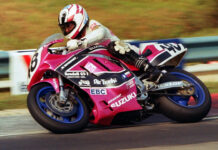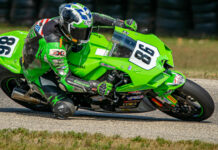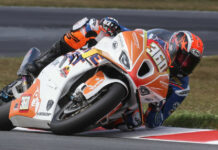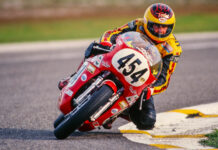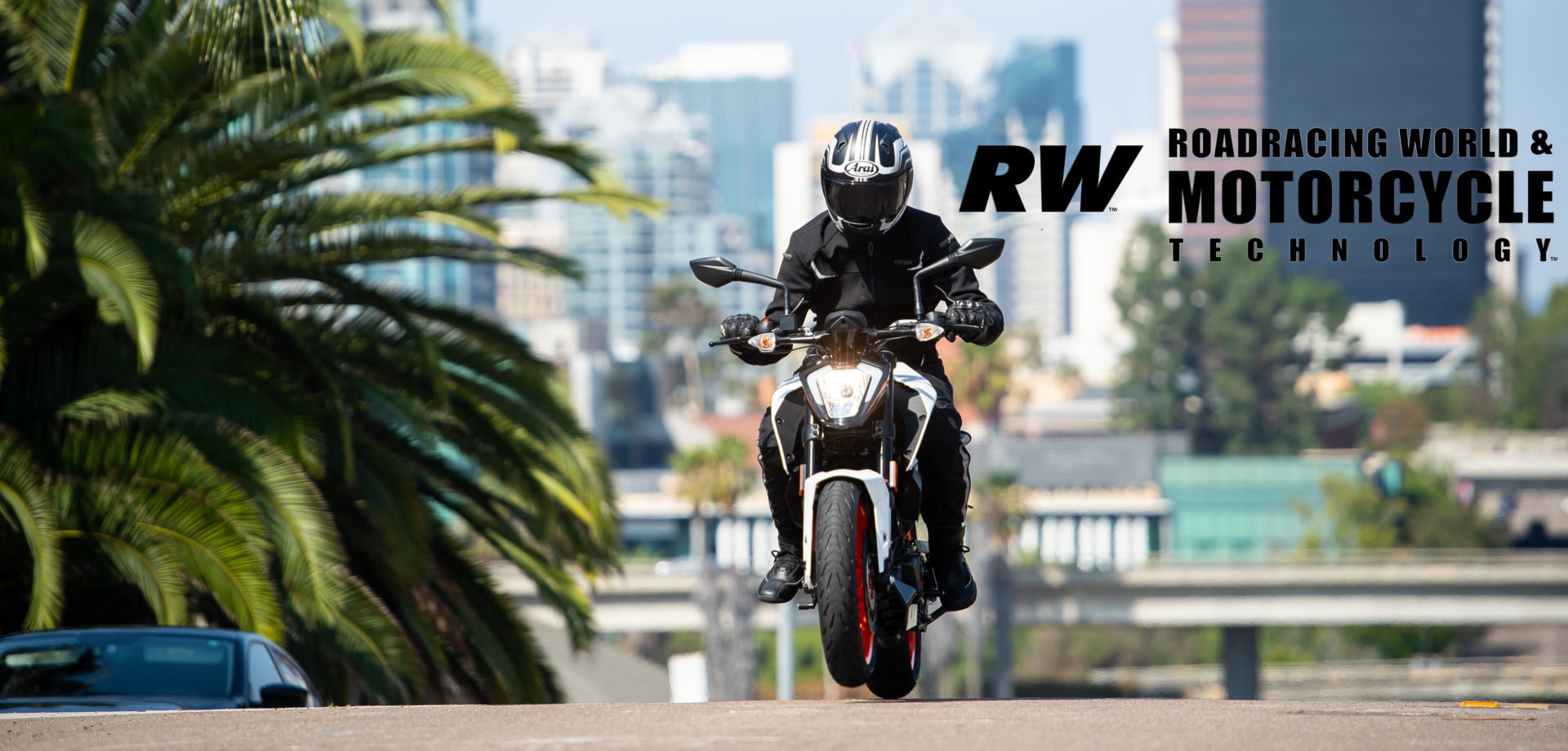By Michael Gougis
To make a good first impression, it’s good to call attention to your strengths. KTM North America was faced with the dilemma of attracting the attention of a collection of experienced motojournalists to the strong points of a motorcycle aimed at the brand-new rider.
What the company did was to lay out a route through the streets and hills of San Diego, order up some picture-perfect Southern California weather, and lead a laid-back cruise on its new-generation, lightweight and feature-packed 200 Duke.
An extension of what the company calls “a brand within an brand,” the 200 Duke, new to the North American market, is designed to be an entry-level machine that delivers a riding experience that echoes the sensation delivered by one of the company’s bigger Duke models.
“With the 200 Duke, we have a full offering in the (Duke) segment,” said Ryan Sarancha, Product Management Specialist, KTM North America. “We have every segment covered as the rider progresses along the range. The 1290 Super Duke R is the halo bike, the bike that the 18-year-old has hanging on the wall, something that they want, and the 200 is a place for that rider to start.”
While the 200 Duke is designed to be unintimidating for the beginning rider, it is also designed to deliver a quality and full-size impression for riders who are more experienced, Sarancha says. “It has that big-bike feel, it has premium touchpoints,” he says.
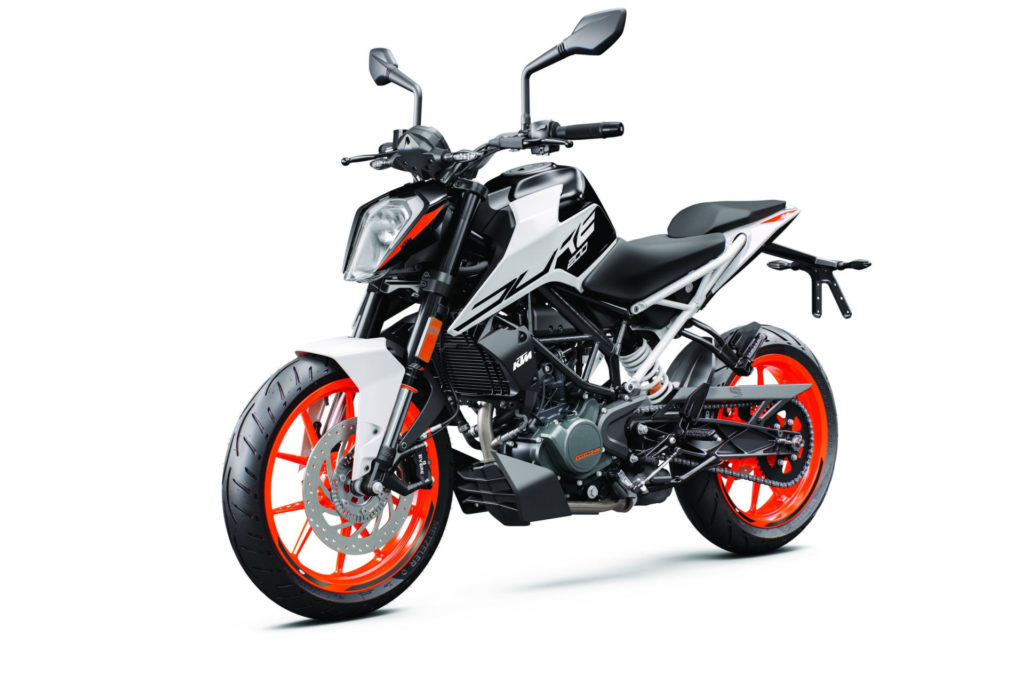
Riding Impressions
The machine definitely feels like a full sized motorcycle when you throw a leg over the seat. The upright seating position puts the rider slightly further forward than on the previous generation 200 Duke (not sold in the U.S.) and it has lower handlebars, but still offers plenty of leg room with a comfortable reach to the bars. The U.S. model, which is shared with Europe and the Philippines, has a slightly lower seat, accomplished by limiting the extension of the rear shock.
Compared to the 390 Duke, the 200 has a couple of obvious cost-saving components. The headlight is halogen rather than the split LED of the 390, and the dash is a liquid crystal display rather than the more contemporary Thin-Film Transistor (TFT). Perhaps most significantly, it lacks the assisted slipper clutch that the 390 has, and while the clutch pull on the 200 is light, it’s not quite as light as the pull on the 390, and the engagement can be a bit abrupt.
The engine is impressive when measured against its design parameters. It has enough power to pull the bike forward cleanly, and there are no steps or drops across the rpm range. The throttle acts like a rheostat, dialing in exactly the amount of power required. It’s not just that the output was unintimidating, but the engine was easily controllable – exactly what a new rider needs.
The suspension, non-adjustable except for preload at the rear, is also competent, with adequate springing and damping to keep the chassis stable over the ruts, potholes and bumps that are typical of well-traveled city streets. Braking also is a well-controlled exercise with plenty of feedback, typical of the direct feel associated with single-disc setups, and the ABS kicks in smoothly when the rider stomps on the rear brake pedal, as a new rider is wont to do. Shifting is precise, with or without the clutch.
Really, for zipping around town, the bike is a giggle. Twist the throttle and rev it to the redline, bashing through gears, and the chassis remains on an even keel. The Michelin Road 5 radials provide plenty of grip. The bike remains neutral when leaned. And its light weight – barely 300 pounds dry – makes it easy to flick, muscle or twist through narrow places or between lanes.
In its natural habitat, the KTM 200 Duke provides exactly the riding experience the company intends and the new rider should seek. It is another point of entry for participants in the sport, exactly what the industry needs.
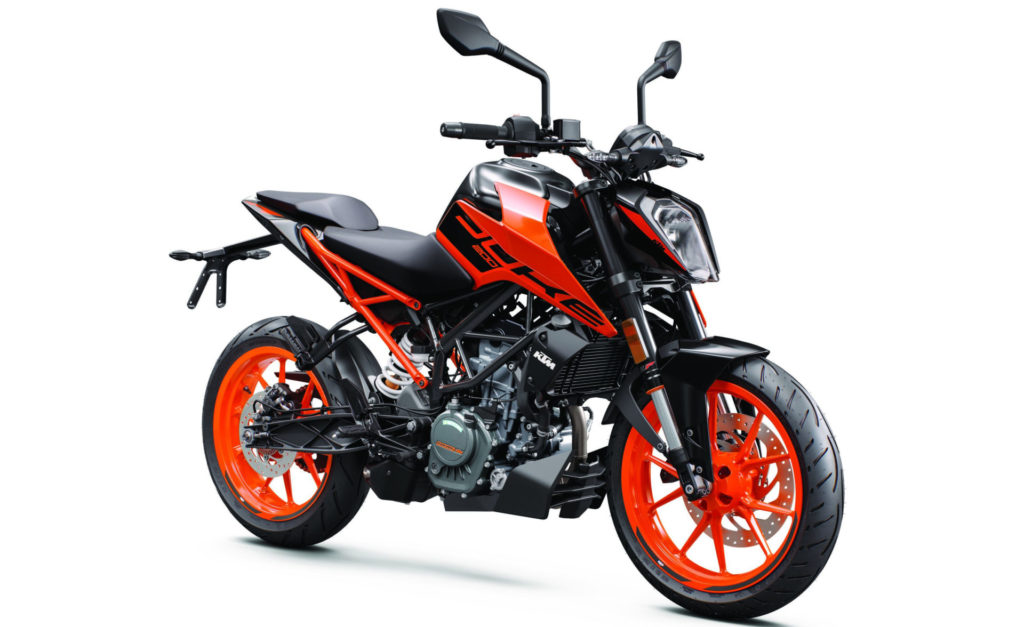
Technical Specifications
The DOHC, liquid-cooled, four-valve Single displaces 199.5cc, with a bore and stroke of 72mm by 49mm. The carbon-coated cam followers and valve train are designed to be lighter and smaller, reducing the inertia of the system and allowing the engine to rev more freely.
KTM says the bike puts out 26 bhp at 10,000 rpm, with maximum torque of 19.5 nm (14.3 lbs.-ft.) at 8,000 rpm. A 38mm Dell’Orto throttle body handles intake, while a three-section exhaust houses the catalytic converter.
A six-speed transmission delivers power via chain drive to the rear wheel. A single 300mm disc is mated to a radial-mount four-piston BYBRE caliper in the front, while a 230mm disc is mounted at the rear. A Bosch ABS unit with a Supermoto mode provides anti-lock braking that, with the flick of a switch, can be disabled for the rear wheel.
A set of 43mm WP inverted forks with open cartridge design and split function (rebound in one fork leg, compression in the other) handles suspension duties in the front, while a progressive linkage and a floating-piston WP shock provide 150mm travel at the rear, with adjustable preload available. Modifications to the suspension allowed KTM to lower the seat height to 31.6 inches. Tires are Michelin Road 5 radials, 110/17 at the front, 150/17 at the rear. The steel trellis frame, a KTM trademark, has 25 degrees of rake.
KTM says the curb weight, with all fluids except for fuel, is 308.6 pounds. With the 3.5 gallon steel tank full, the range for the thrifty machine should exceed 200 miles.
Suggested retail price is $3,999 and should be available from U.S. KTM dealers now.


